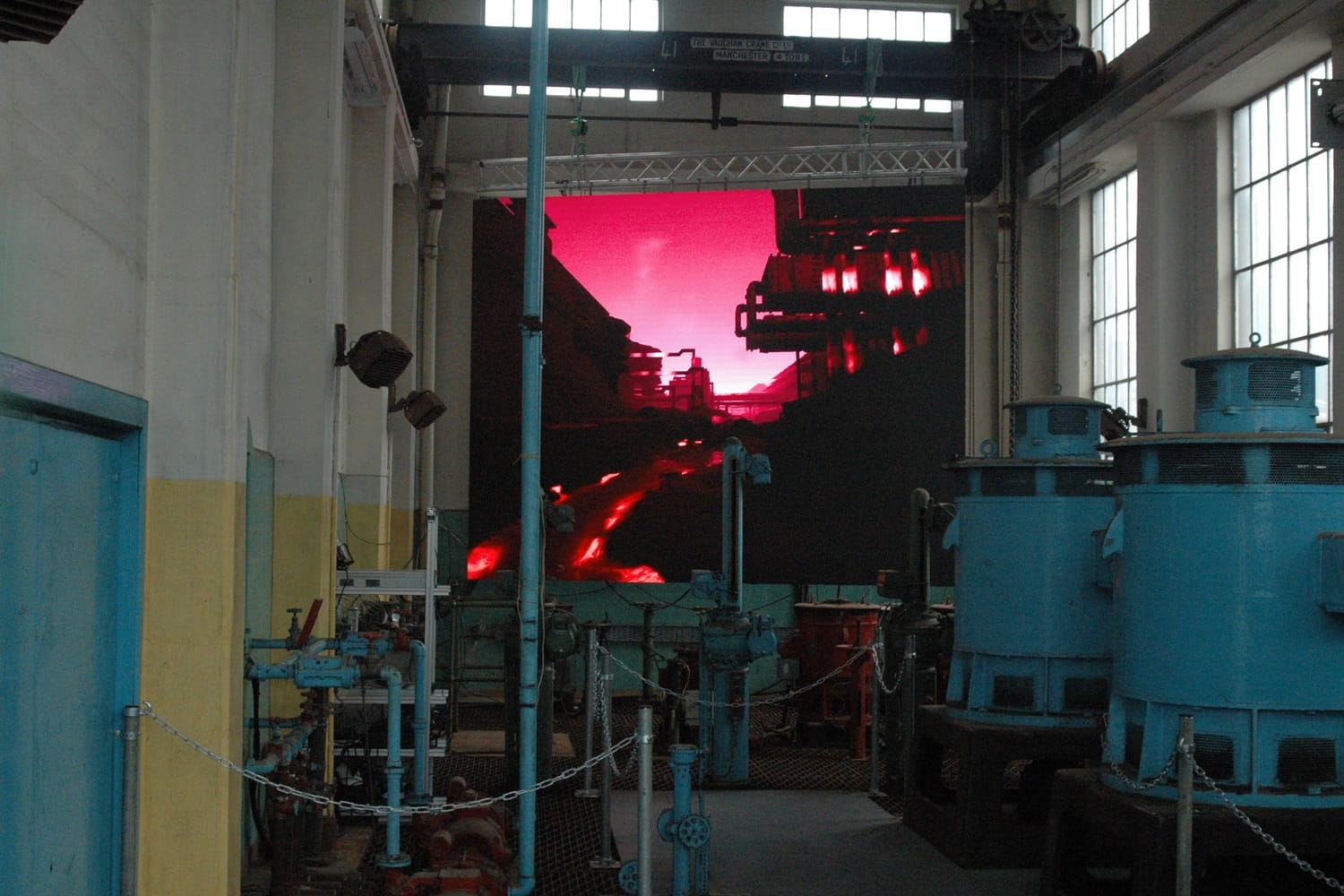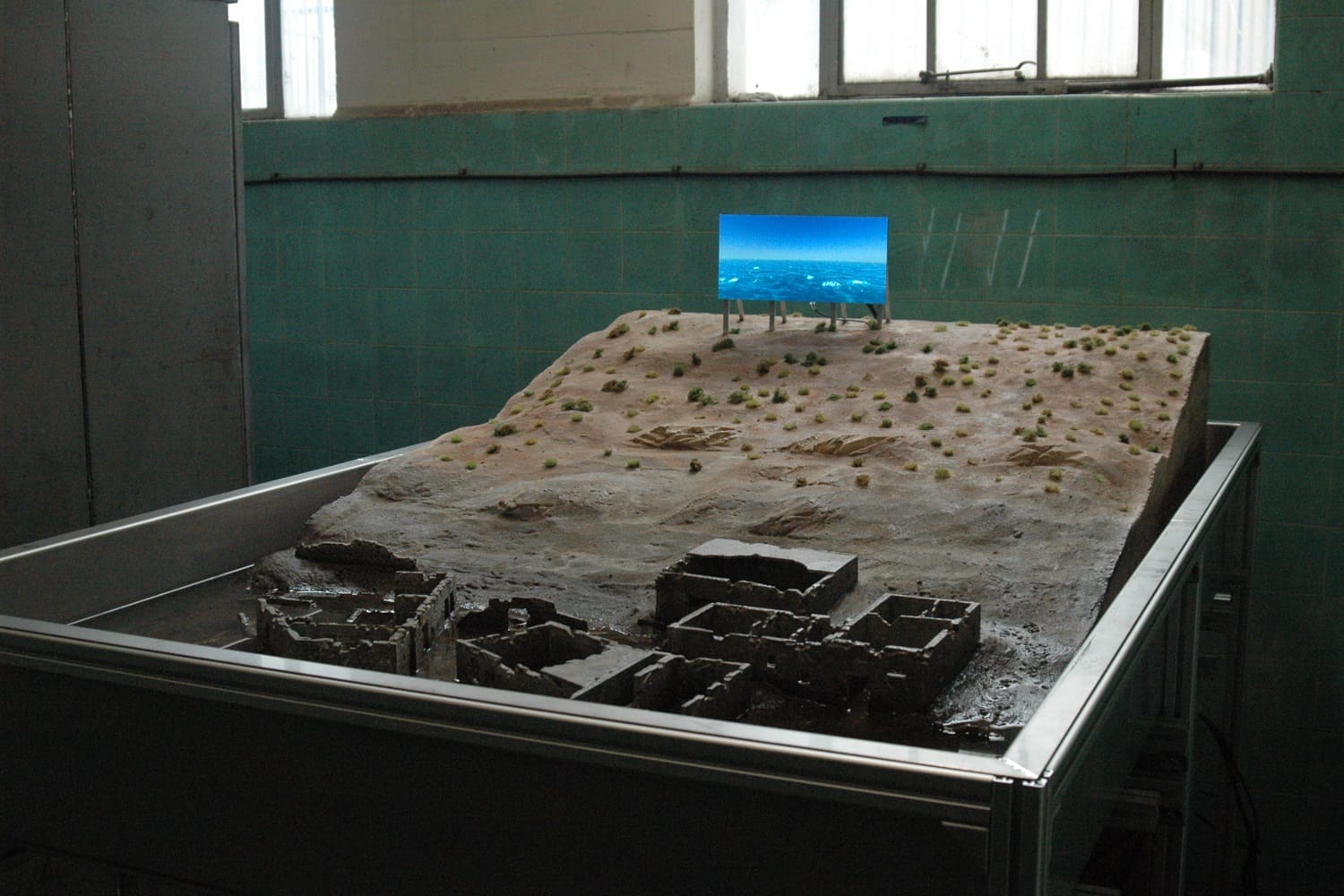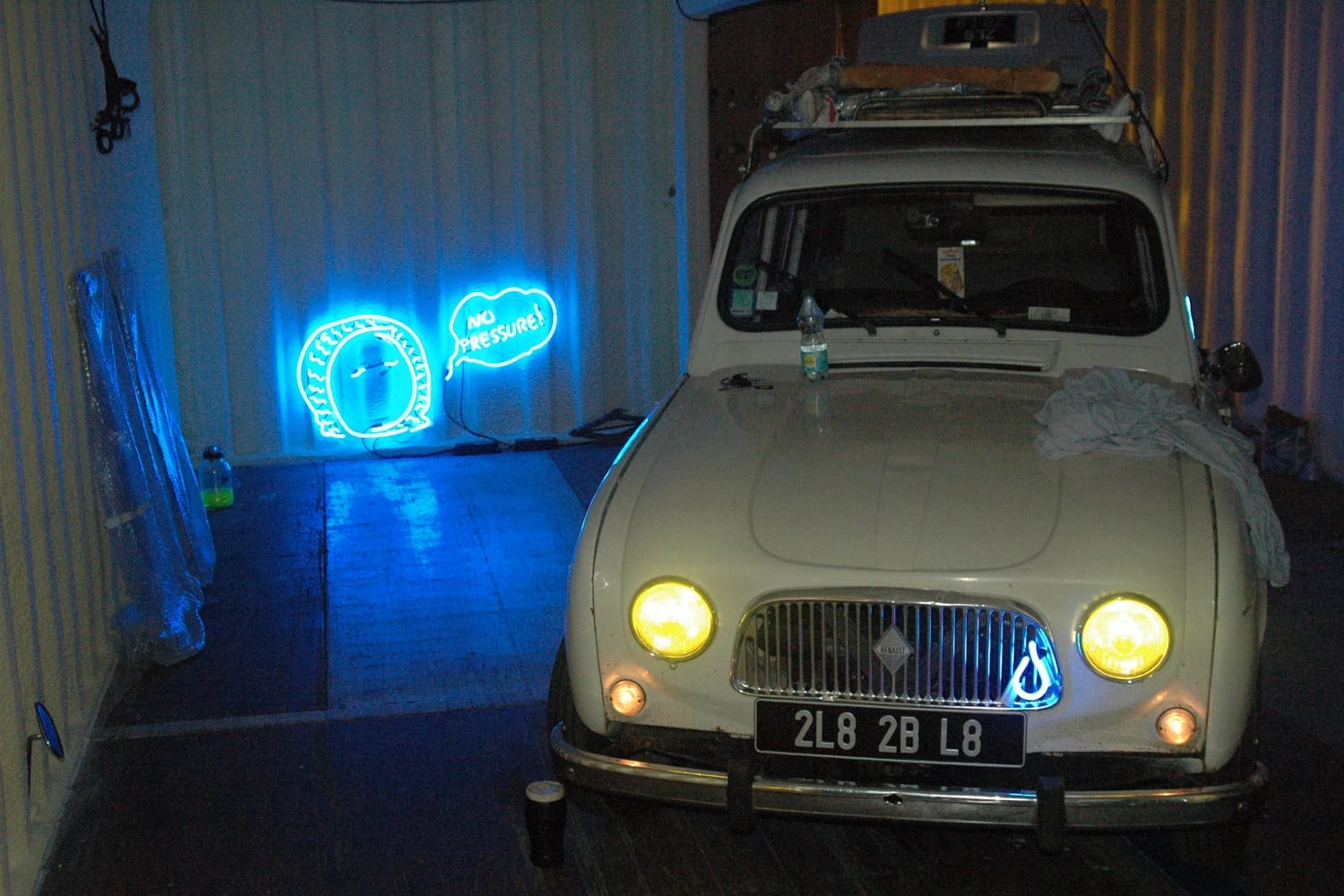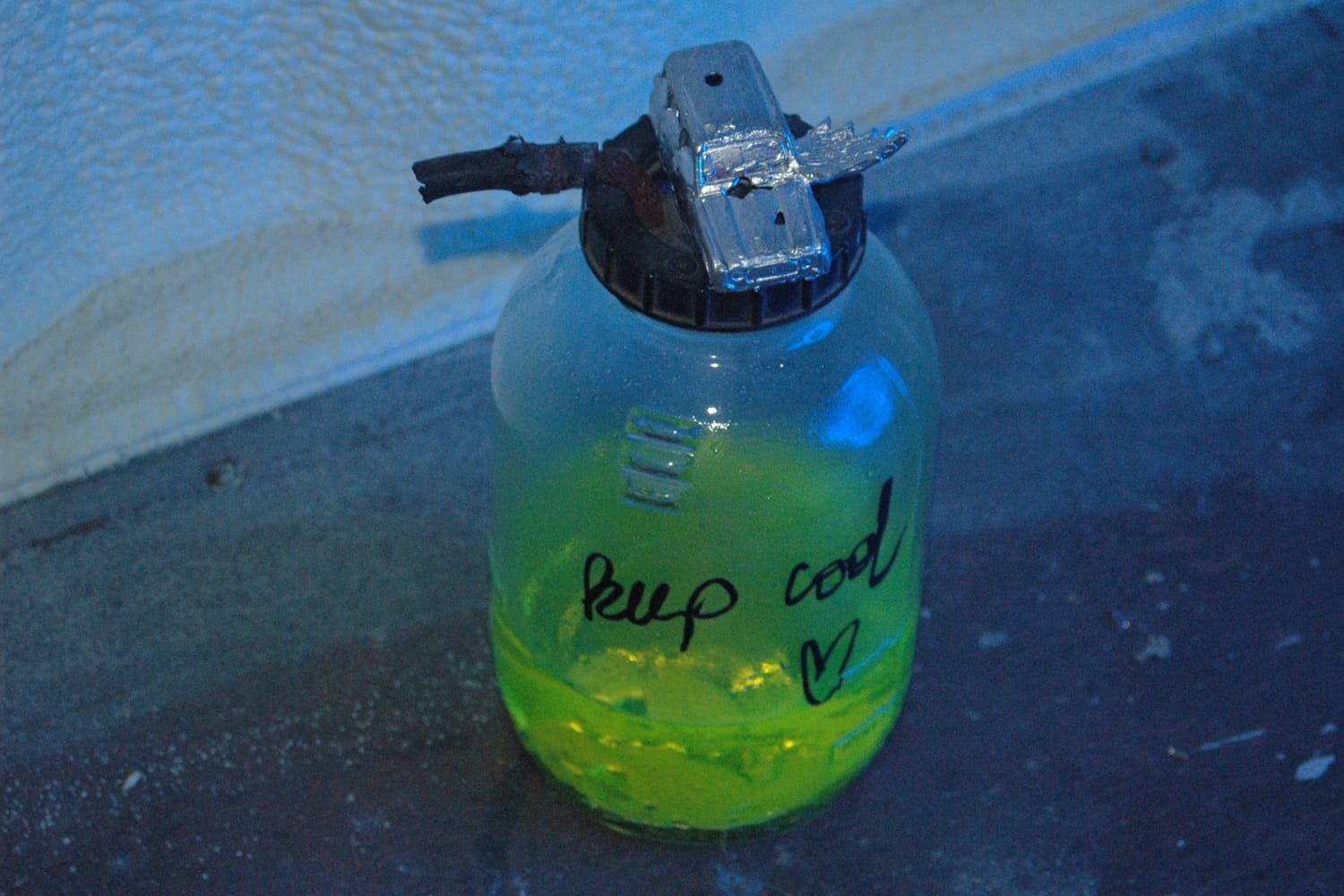What’s the best way to tell area residents about plans for a new asylum shelter nearby?
The government should tell communities directly about plans for new asylum shelters, some activists and politicians say.
“It’s all things that link to the port, like transport and logistics, but also centuries of migration.”

In the front window of the Temple Bar Gallery + Studios on Tuesday morning, a large flatscreen showed a live feed from Dublin’s Docklands.
Overlaying the footage, which was being streamed from a camera fixed to the top of the Odlum’s Mills on the Alexandra Road, was a digital clock.
It was 9.33am, it said. Although it was actually 10.59am.
It was one hour, 25 minutes and 21 seconds behind Greenwich Mean Time.
The clock was neither observing GMT nor the additional hour from daylight savings.
It was on Dublin Mean Time, says Michael Hill, a programme curator in the gallery. “It was Ireland’s time zone that was independent of anywhere else in the world.”
That was the official time zone in Ireland between 1880 and 1916, he says, and was a precursor to both GMT, which was introduced to the state in October 1916, as well as daylight savings.
The screen, conceived by artist Yuri Pattison, is a teaser for the gallery’s current show, Longest Way Round, Shortest Way Home, which is situated 4.5km east of Temple Bar.
In the Pump House on the Alexandra Road, the exhibition consists of two separate solo shows – dream sequence by Pattison and Beep Beep by Liliane Puthod.
With its title derived from a passage in James Joyce’s Ulysses, Longest Way Round is loosely based around the idea of water, movement and journeys, Hill says.
“It’s all things that link to the port, like transport and logistics, but also centuries of migration,” he says.
A simple piano melody echoed throughout Pump House Number Two.
Over and over, a single key was hammered out. A C, played softly at first, then louder and louder, as it was struck more vigorously.
It sped up, before eventually the note was joined by descending chords that gave the repetition a greater form.
The piano was tucked away in a small room at the back of the building, behind rows of valves and pumps, some of which are marked with the initials of General Electric Company. But there wasn’t a pianist.
It was a self-playing piano, rigged up to the old machinery in the pump house.
It adds and subtracts notes continuously as an environmental monitor picks up new information, says Aibhlin Clabby, one of the invigilators at the on-site exhibition on Saturday afternoon. “So, what it plays now is so different from what it played at the start.”
In the next room over from the piano, a large screen runs a film, showing a river flowing from its source, through tributaries, cityscapes dominated by skyscrapers and industrial chimneys, akin to the Poolbeg stacks, before eventually flowing out to sea with the sun on its horizon.

The film, dream sequence, by Pattison, loops. But it never looks exactly the same. With each successive play, the colours and tones change. The skyline is a hazy pink. Then later it is lilac.
As the river courses through forests, sometimes the screen is so dark that the only visible features are slivers of a distant sky behind black silhouetted trees, while the water is the occasional flicker of red.
When Clabby observes it, the water is almost orange. “I haven’t seen it like that before,” she says.
It too is evolving based on information that is being fed into it from the pump house and port, Clabby says. “When the sun starts to set, the light will start to dim in it and it goes darker or deeper purple.”

Pattison’s work reflects environmental changes, be it pollution in the water or changes in the temperature.
In the next room over, he has built a model of a sloping landscape populated by tiny shrubs. At the top of the slope is a miniature billboard with an LED screen showing a calming film of a seascape, while at the bottom are the ruins of small houses that are flooded by water.
Inside some are bits of coral and teeth dating from the Victorian-era, which the artist found in the Thames, Clabby says. “He carbon-dated them. It’s insane.”
The model is designed to comment on rising sea levels. Live data feeds into a pump below the table, which lifts or drops the water. The landscape already shows a faint watermark.
Outside the pump house where Pattison’s exhibition is, and beneath a large crane, a pair of cargo containers occupy what were once the old graving docks off the Alexandra Road.
The containers were merged by artist Liliane Puthod to create a darkened enclosure for a vintage car, a 1962 Renault 4.
Its head and tail lights were on. They warmly lit the room along with blue neon lights fixed to the vehicle and container walls.
The neon lights were in different shapes. One was a tear, attached to the car’s grill. Another was in the shape of a face saying “no pressure”.


Puthod conceived of this installation, Beep Beep, in 2023 after she had been clearing out her late father’s shed in their hometown in the Rhône-Alpes region of France, she says over the phone.
“I grew up on a farmhouse and there were a lot of sheds, and in them were things my father kept for all his life,” she says.
The cargo containers were decorated to imitate these sheds. In each corner, there were items like water bottles and old rags strewn about by a petrol canister. Boxes wrapped in newspaper, containing tins of engine and motor oil with liquid tungsten.
Coming out of the Renault car, bouncing against the walls of the container, was a ’60s French pop song, “Le Temps de l’Amour” by singer-songwriter Françoise Hardy.
As the track faded, it was replaced with radio static, before the rolling snare drum and Hardy’s reverberating vocals started back up.
Puthod’s installation creates, within Dublin Port, the feeling of entering her father’s work shed, with the car as its centrepiece. It’s a hybrid space, she says. “It’s like passing through a tunnel, into a garage or workshop.”
For 35 years, she would see the Renault 4 parked in one of the sheds, she says. “I don’t have memories of being in the car, but it was always this potential vehicle waiting in the shed.”
It was a very popular economy car for French families, and one which symbolised the “autoroute” system, which improved road travel between different towns and cities within France and with its neighbouring countries, she says.
But it also has a connection with Ireland, she says. “There was a Renault car assembly factory down in Wexford.”
That was opened in 1962, and the cars were assembled there after they were shipped as separate parks in flat-packs from France to avoid heavy import taxes, she says. “It was sent as a kit in wooden crates.”
With the port an ideal location, as cars are still imported via ships sailing into Dublin just behind the pump house, Beep Beep weaves the story of her family around the social history of car manufacturing, she says. “I was able to contact some former workers in the factory in Naas.”
But that assembly plant closed in the 1980s, she says. “For the installation at the port, working at the shipping containers almost became a contemporary tomb of goods and storage.”
The Temple Bar Gallery + Studios landed on the idea for Longest Way Round, Shortest Way Home after Pattison’s dream sequence was shown in Germany, says Hill, the curator. “He had been taking part in an exhibition and given a venue in a water treatment plant along the Ruhr River.”
Bringing it to Dublin, they would need to find a similar industrialised setting, and the port became the perfect spot, he says.
“Dublin Port was interested in showing the recent cultural history and social history of the port, as there is the shift of manual to mechanised work,” he says.
For the gallery, which is right beside the Liffey, they wanted to build a sense of connection between the city centre and its outer reaches, he says. “So the river is a strong metaphor in Yuri’s work, so we wanted to extrapolate on that, with the journey on the Liffey down to the Port.”
Behind the pump house, a large white freight-only ferry groaned loudly, and seagulls squawked overhead.
Clabby, the invigilator, stood out on the site of the old graving docks, looking over towards the Odlum’s Mills where the live stream continued to record the area, and where a flock of crows had gathered.
The crows and the ravens in the area tend to attack magpies and pigeons, she says. “You could see a massacre while you’re here.”
Though remote, this heritage zone is a special space for exhibitions and artist residencies, she says. “I love it here in the mornings. It’s so productive. All the dock workers are out. There’s noises. There’s reverberations. There’s resonance.”
Get our latest headlines in one of them, and recommendations for things to do in Dublin in the other.